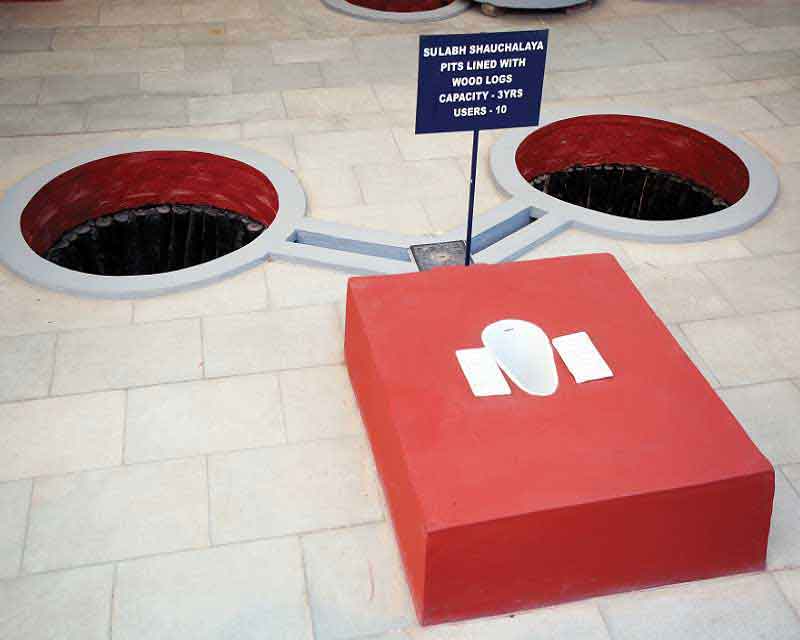How India is trying to improve health and poverty conditions
Bindeshwar Pathak, the founder of Sulabh International Social Service Organisation, invented, in 1968, two-pit pour-flush ecological compost toilet technology. Sulabh flush is based on a simple design that is eco-friendly and uses just around 1.5 liters of water to flush. The two-pit system is a simple, cheap, and useful design that cuts down on the need for people to clean out latrine pits, a practice called “manual scavenging”.

So, using just a small amount of water, waste is rinsed from the outhouse room and diverted down one of two channels into an underground pit, which is built with holes to allow for drainage and air circulation that will facilitate decomposition and drying. When the pit becomes full, waste is diverted to the second channel. By the time the second pit is full, the resulting waste from the first has fully decomposed and dried into an inert, dirt-like solid, and can be easily and cleanly shoveled out.
That’s why in India, the name Sulabh is synonymous with public bathrooms. Bindeshwar Pathak is a giant in the world of toilets, and Sulabh facilities are everywhere throughout India. Over the past 50 years, the organization says it has built more than 1.5 million toilets.
In 1974, Bindeshwar Pathak introduced the concept of pay-to-use public toilets in India as a way to fund their maintenance. Since then, over 9,000 Sulabh public toilets have been built across the country.
Sulabh toilets are now in major public places, including dozens of railway stations, and are used by approximately 20 million people every day.
At the sprawling Sulabh headquarters is the Sulabh Public School, a lush green campus that serves 520 students. As you arrive in the central courtyard, kids in uniforms run around under a large blue banner declaring “Toilet first, temple later”, a quote from India’s Prime Minister, Narendra Modi which demonstrate how sanitation is even more fundamental than culture.
Many of these kids’ families are low-income and come from the Dalit caste, known for doing the most undesirable work, like scavenging toilet pits. Sulabh works to provide education and training to these students, much of it free or highly subsidized, to help break the cycle of poverty.
At the Sulabh School Sanitation Club, which has its own “Poo” and “Pee” mascots on a poster outside, girls make sanitary pads that the school sells for three rupees (about four cents).

A tweet from Ram Nath Kovind, the President of India, praising Sulabh International, is displayed on the school wall.
There’s a museum of toilets at Sulabh’s headquarters, which National Geographic cited as one of the 10 weirdest museums in the world. You can marvel at the history of sanitation going back to 2500 B.C., and see some exotic methods of waste management.
There you can see, for example, a replica of King Louis XIV’s bulky wooden throne of thrones. Or a display commemorating the most expensive toilet in the world, a $19 million toilet NASA purchased from Russia to be used aboard the International Space Station with a no-flush vacuum system that pumps urine to a filtration system, which converts it into drinking water. There’s also an Incinolet, a toilet that burns poop into ash.
Near the museum, there’s a treatment plant where Sulabh takes the effluent from an adjacent public restroom and turns it into usable products. The biogas waste conversion system powers burners in a small kitchen and solid waste is composted and can eventually be used as fertilizer. The water is treated and recycled into the toilet water and for irrigation on the Sulabh grounds. Sulabh has 190 of these biogas plants installed in public toilet complexes in India, and five in Kabul, Afghanistan. Biogas, as well as for cooking, can be used to mantling lamps and generate electricity.
Source cnet.com

